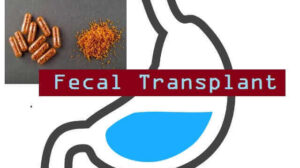
Barrett’s esophagus is a disease in which a change occurs in the tissue layer in the esophagus (esophageal). Naturally, the esophagus has a strong tissue so that it can withstand the friction of food coming from the mouth.
But in the patient with Barret’s Esophagus, the cells of the esophagus become damaged and change to resemble tissues in the intestines. This change makes the esophageal tract easily hurt. And if this condition is not handled immediately, it can potentially become a cancer network.
Barrett’s Esophagus Causes
Essentially, the exact cause of the Barret’s Esophagus is not yet known clearly. Barret, however, is more common in people with GERD.
GERD occurs when the valve between the stomach does not function properly so the gastric acid often rises and injure the esophagus.
However, not everyone with the previous Barret’s Esophagus experienced GERD. 3 out of 5 cases of Barret’s Esophagus does occur in people with GERD, but the remaining 2 is not yet known exactly what causes.
Read also:
How to prevent acid reflux + Video
Who is at risk of experiencing the Barret’s Esophagus?
If you are experiencing GERD disease for more than 10 years, then your risk of Barret will be much greater than others.
Other risk factors of the Barret’s Esophagus are:
- The men are at higher risk to experience Barrett.
- Above 50 years old. This disease is more common in elderly
- Smo**king or having a history as an active smo**ker
- People who are overweight. The more fat amount in the abdominal or abdominal cavity the higher the risk of experiencing Barret.
Barrett’s Esophagus Symptoms
Barrett’s esophagus does not have any special symptoms. But this condition is generally caused by GERD (gastroesophageal reflux disease). Therefore, the prolonged GERD sufferers have a great risk of developing this condition.
It is therefore important to know the characteristics of the condition of Gastroesophageal reflux disease to detect the Esophagus as early as possible. The GERD complaints include:
- A sense of heat in the chest.
- Pain in the liver.
- Pain in the chest.
- Nausea and vomiting.
- Difficulty swallowing.
- Food chokes or vomiting
- Breathing difficulty, hisping sound
- Dry throat or Hoarseny
In addition, there are also some traits and symptoms not mentioned above. If you have the same complaint, please consult a physician.
When should You contact a doctor?
If you experience any of the symptoms described above or have another question, please contact your doctor immediately. The Status and conditions can be different for everyone, always discuss with the doctor about the best diagnosis, treatment, and handling methods for you.
Barretts Esophagus Diagnosis
Endoscopy is performed to determine if you have a Barretts Esophagus. A tube that is pinned by the camera and the lamp at its end (the endoscope) is inserted into the throat to check for signs of changes in the tissue of the esophagus. The normal esophageal tissue appears pale and shiny. In the Barretts Esophagus, the tissues appear red and velvet.
The doctor will remove the tissues (biopsy) of the esophagus. The network will be examined to determine the level of change occurring.
Determining Tissue Change Rate
The doctor will examine the tissues in the laboratory (pathologists) to determine the level of dysplasia in the esophagus cells. Because it is difficult to diagnose dysplasia in the esophagus, it is best to have two pathologists, at least one specializing in the pathology of gastroenterology, agreeing to the diagnosis. Tissues can be categorized in several tiers, including:
- There is no dysplasia, if the Barretts Esophagus appears, but no precancerous changes are found in the cells.
- Low dysplasia, if the cell shows signs of precancerous change.
- High-level dysplasia, if the cell indicates many changes. A high degree of dysplasia is regarded as the last step before the cell turns into esophageal cancer.
Barret’s Esophagus Screening
Screening may be recommended for men who experience GERD symptoms at least weekly, which do not respond to treatment with a proton pump inhibitor (PPI) medication, and which has at least two more risk factors, including:
- White-skin
- Has a lot of fat in the stomach
- Current or past smo**king
- Have a family history with the Barretts Esophagus or esophageal cancer
While women are significantly less likely to suffer from the Barretts Esophagus, women should be screened if it has an uncontrolled reflux or has other risk factors against the disease.

![What is Gastroenteritis: Symptoms, Causes, & Treatment [Stomach Flu] 2 What is Gastroenteritis: Symptoms, Causes, & Treatment [Stomach Flu]](https://healthbeautyidea.com/wp-content/uploads/2019/07/What-is-Gastroenteritis-300x168.jpg)
